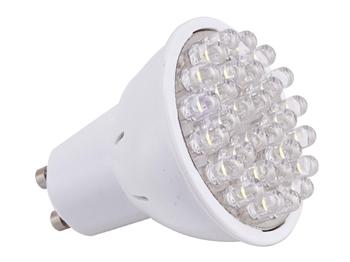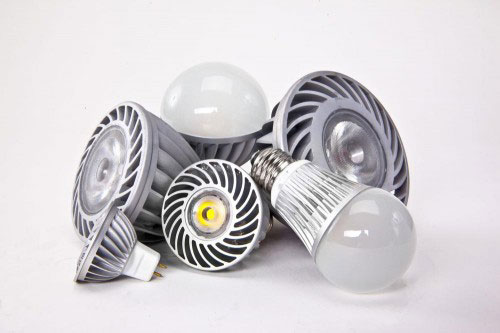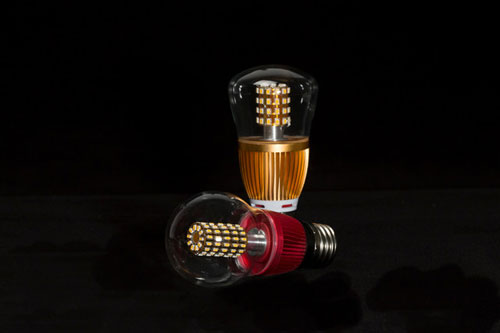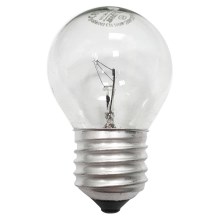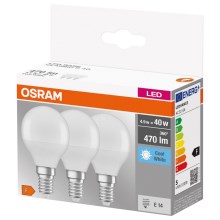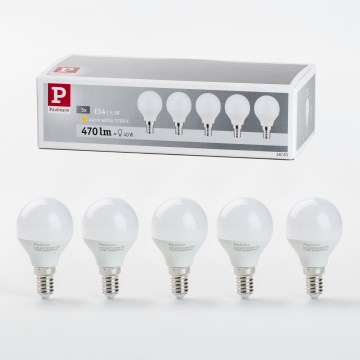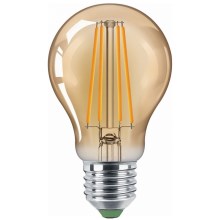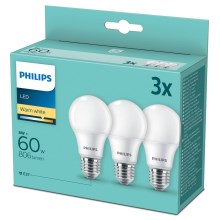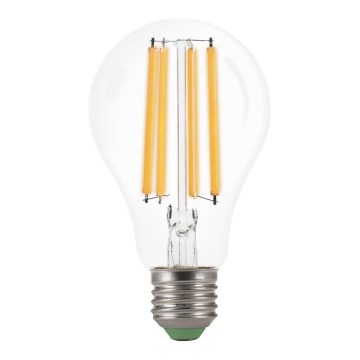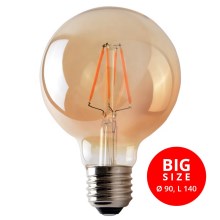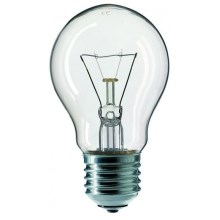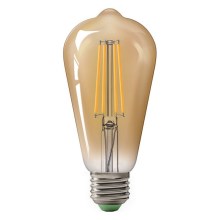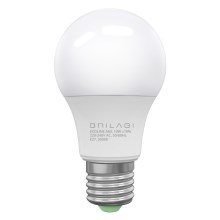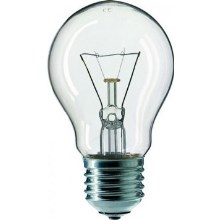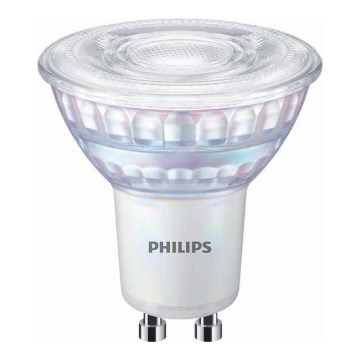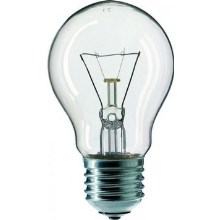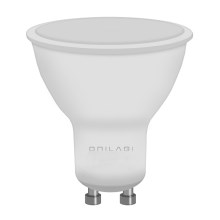Most LED bulbs are designed to be powered by
230 V, but there are also LED bulbs for
12 V, for which you will need a
power supply/ transformer (mainly spot bulbs or models of small bulbs). Their service life is stated to be
10 years or more. In hours, LED products specify a range of
50 000 (equivalent to 24 years of lighting for 6 hours a day) to
100 000 hours. It depends on the type of light source, used material and compliance with the conditions for proper use. The fact that LED products are
environmentally friendly is also important.
They do not contain any toxic substances, lead and mercury so they can be used anywhere without fear of damage and subsequent recycling.
- Long life span
- Economical
- High luminosity
- Immediate start
- Resistance to frequent switching on / off
- Possibility of dimming
- Possibility of different color combinations
- Resistance to mechanical damage
- Environmentally friendly
LED TECHNOLOGY
LED technology is slowly but surely becoming a hit of this era, and the increasingly used LED light sources, ie LED bulbs, are rightly coming to the fore.
LED stands for semiconductor electronic component that converts electrical current into light (and heat). LEDs can be small and yet achieve high light output and can be applied to virtually all new and existing light sources, following the rules for proper use. The most commonly used diodes are SMD that are used in most LED bulbs. The main advantages of SMD chips are small size, efficiency (up to 120 lm / W) and long life, which can reach up to 100,000 hours (or more). A number of different types are produced, which differ in size, number of LEDs, and power. They are marked with a number according to their dimensions - 2835, 5630, 5050, 3014, etc. behind the SMD 5050 mark are three square diodes with dimensions of 5 x 5 mm, power consumption 0.24 W with light scattering 120 °.
We divide them according to power input into:
low power consumption (up to approx. 0.2 W)
medium power consumption (0.2 to 1W)
high power consumption (above 1W)
Luminous flux
One of the main characteristics of a light source is the luminous flux, sometimes referred to as the luminous power, which indicates the amount of light emitted in all directions. So if you want to know more precisely how a given light bulb will shine, focus on the lumens (lm), which are used to determine the intensity of light. The more lumens, the better the luminosity.
Bulb efficiency
In the past, it was driven by performance, but with new technologies (LEDs), watts no longer matter and can be misleading. The amount of watts indicates how much light bulb consumes electrical energy, not how much light it produces.
The efficiency of diodes (LED bulbs) is therefore expressed in lumens and can be evaluated on the basis of specific power or the ratio between luminous flux (given in lumens) and wattage (given in watts), which determines how much light a bulb can produce from one watt. It is not at all difficult to calculate the benefits of investing in different types of light bulbs. Simply divide the light output in lumens by the power consumption in watts.
Illustrative calculation examples for classic and LED bulbs:
The classic 60W bulb with a light output of 710 lumens gave us a value of 12 lm / 1 W.
710 lm/60 W = 12 lm/W
With an 8 W LED bulb with a light output of 600 lumens, we get a value of 75 lm / 1 W.
600 lm/8 W = 75 lm/W
And since the rule applies, the higher the efficiency (the more lm / W), the greater the savings in energy costs, it is already clear to you that the LED bulb clearly leads compared to a classic bulb - it is up to 7 times more efficient !!!
LED sources can produce more light from one watt (currently this value is in the range of about 80 to 160 lm / W) than classic light bulbs (about 12 lm / W), halogen bulbs (24 lm / W), compact fluorescent lamps (60 lm / W) or fluorescent lamps (80 lm / W), which is crucial for the economics of their operation.
A table for an approximate comparison of a classic and LED bulb, which will allow you to convert. The classic 60 W bulb will then be replaced by an LED bulb with a luminosity of around 750 lm.
|
The power of a classic bulb
|
Luminous flux of LED bulb
|
|
15 W
|
100 - 150 lm
|
|
25 W
|
225 - 275 lm
|
|
40 W
|
450 - 500 lm
|
|
60 W
|
750 - 800 lm
|
|
80 W
|
900 - 1 000 lm
|
|
100 W
|
1 200 - 1 300 lm
|
|
125 W
|
1 700 - 1 800 lm
|
|
150 W
|
2 100 - 2 200 lm
|
In this table, you can see which light output values correspond to different light sources.
|
Indicative luminosity
|
Classic bulb
|
Halogen bulb
|
Energy-saving bulb
(compact fluorescent bulb)
|
LED bulb
|
|
500 lumens
|
40 W
|
35 W
|
11 W
|
7 W
|
|
750 lumens
|
60 W
|
42 W
|
15 W
|
9 W
|
|
1300 lumens
|
100 W
|
70 W
|
23 W
|
15 W
|
Light color (chromaticity temperature)
The chromaticity temperature is an expression of the color emitted by a given luminaire. It is given in Kelvin (K) and ranges from 1,800 up to 16,000 K. Each type of light has a different color. Some of the lightings are bluer, others yellowish to reddish. Simply put, the higher the temperature (more kelvins), the colder light we perceive (more white to blue), and the fewer kelvins, the warmer and darker the light is. For a better idea - the light of a candle or light bulb is yellowish, its temperature is in the range of 1,200 - 3,500 K. Typical daylight at noon and strobe light has a temperature of around 5,000 to 7,000 K. In the cloudy sky and full brightness, the light reaches highest temperatures, around 8,500 to 12,000 K.
We distinguish 3 basic types of light:
- Warm white (2 700 - 3 500 K)
- Daylight white (4 500 - 6 500 K)
- Cold white (6 500 - 9 000 K)
In contrast to classic luminaires, it is relatively difficult to determine the chromatic temperature. Therefore, the range in which the LED is lit is usually indicated.
LEDs are sold in several colors. The color is affected by what kind of semiconductor is in the LED. The resulting color depends on the released photons - blue light is created by releasing high energy, red light on the contrary by releasing low energy. LEDs are monochrome, which means that they emit only one light (dominant wavelength). Despite the wide range of colors, LEDs cannot directly emit white color. This is usually achieved by mixing colors, or by photoluminescence (ability to emit light). Thanks to this, the white light of the LED lighting is available in several color temperatures.
Use of 3 basic types of light in practice
Each color has a different effect on us. Some colors soothe, others arouse. Therefore, it is very important to think about what color of lighting you choose. Generally:
Warm white is more suitable for the bedroom, living room, or children's room. It looks pleasant and cozy - it evokes a feeling of well-being. This color is closest to a classic light bulb, it produces a warm yellow color, which can tire the eyes and put you to sleep.
Daylight white is similar to daylight, does not tire the eyes as much (does not make you fall asleep), and is, therefore, suitable for work or some activity. You can put it in the kitchen, study room, bathroom, hall or in general in places with a lack of daylight.
Cold white is used more in industrial buildings or medical facilities than in home interiors. Its light is bluish and unnatural, it looks too cold.
However, the above may not be a rule. Since this is an individual matter, choose the colors emotionally, so that they are pleasant for you. It should also be noted that the color of the light is also affected by the bulb cover. If you buy a light bulb with a milky cover, it is clear that its light color will be different from that of a light bulb with a clear cover. The milky color of the cover changes the color of the light emitted by the LEDs. The advantage of the milk cover is that it detracts from the sharpness of the light and thanks to that the bulb can be used as a ceiling light, ie also in lights without a cover or shade.
Color rendering index (Ra)
An important indicator of a light source is also the color rendering index Ra (CRI - color rendering index), which is an evaluation of the fidelity of color perception. So it means that it helps us to see things in their natural colors compared to bright daylight. The value of Ra can be from 0 to 100 and the higher the value of Ra a light source has, the more natural color rendering is, which many will appreciate, for example, in the kitchen, bathroom, but also in offices, studios, etc.

Light scattering (beam angle)
The value of the light angle is decisive for the use of the source in specific situations, which in practice means that the larger the angle is, the larger the area you illuminate with the bulb is. The beam angle tells us how wide the cone of light will be. The highest light intensity is in the middle of the light cone. The closer to the edge, the lower it will be. At the edge of the light cone, it is around 50% of the maximum intensity, so the beam angle is sometimes called the half-luminosity angle.
For LED bulbs, it ranges from 5 ° to 360 ° (only for the most modern products). It is true that the more degrees (the larger the beam angle), the more it shines to the sides. A bulb with a lower light angle, for example, 45 °, is suitable for lighting a specific place (these are suitable for lamps or hanging chandeliers above the table, but spot bulbs with a light angle of 30 - 60 °, which may resemble effective reflectors, may also be suitable for other places), to illuminate a larger area, choose a bulb with a scattering of 120 ° and above.
Bulb dimmability
Very useful is the function with the possibility of
dimmable bulb, thanks to which you can
set and change the intensity of the lighting according to the situation or your current mood. You need to have
a suitable dimmer for each type of dimmable light source.
Ordinary LED bulbs are not dimmable. Therefore, if you want to use dimming, it is necessary to purchase a
dimmable LED bulb and a
corresponding dimmer, which is a system designed to control and dim the LED lighting, LED strips and LED panels. To dim 230 V LED bulbs, only those that are marked as dimmable can be used. Other LED lighting powered by 12 V - 24 V sources can be additionally modified by replacing the power transformer with a dimmable source, if it is not already modified from the factory. For complete control, a
dimmer-receiver is also required, which communicates with the remote control and the dimmable power supply. This receiver can already be part of a controller or power transformer.
Controller - the transmitter can be remote controlled (both on the wall and in the hand) or you can control the dimming function via phones or tablets with Android and iOS systems using Wi-Fi. For manual dimmers, it is good to find out whether the given dimmer device can communicate with the selected LED lighting.
Unlike classic light bulbs, a dimmable LED bulb does not change the color of the light when the supply current is reduced.
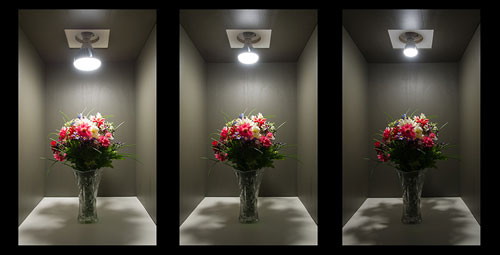
LEDs and their dynamic capabilities
One of the biggest advantages of LEDs is the fact that they exist in different colors and can emit light in the desired color without the use of color filters. The diodes can be continuously dimmed or brightened, and thanks to the combination of three basic LED colors - red, green and blue (RGB), it is possible to achieve various attractive dynamic lighting effects in this mode (RGB), such as color mixing or light scenario changes (can be used indoors and outdoors). The most commonly used colors are white, blue, red, green and yellow.
By combining amber, white and blue (AWB) you can create an imitation of your own daylight. It is also possible to change the white light - the so-called dynamic white (used most often), of which shade can be changed from cold to warm tones regardless of the lighting level and can change the nature of the light from focused to more diffused. Digital lighting is supplied with this lighting with preset functions of various color transitions and effects, which can usually be further changed.
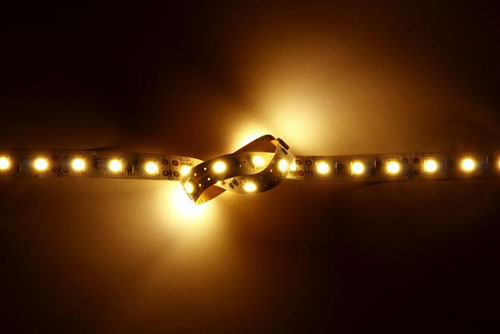
Design of LED bulbs and their lifespan
Cooling
Unlike tungsten light bulbs or compact fluorescent lamps, LED technology is not cooled by heat radiation, but needs a cooler to dissipate heat into the air. Because LEDs are relatively sensitive to heating, if you place them in a luminaire where airflow is limited, they may overheat and their luminosity will decrease over time. Therefore, if you want to achieve maximum lifespan, it is important to think about cooling for LED bulbs, especially for LEDs with a consumption of more than 3 W. It is good to use luminaires in which good air circulation is guaranteed through the ventilation openings. In the case of LEDs with a power input of more than 0.5 W, a heat dissipation surface is usually already present.
Material
The type of material from which the LED bulb is made is also important. Glass or ordinary plastic construction (there are also heat-dissipating plastics) is mostly used for the cheapest LED bulbs with consumption up to 3 W, but does not allow sufficient heat dissipation and if you want such a bulb to serve you well and long, it is good to place it in such places, where it will not light for a long time (it means in the order of several hours). The aluminum or ceramic construction, on the other hand, is ideal for LED bulbs with higher consumption and long continuous lighting. These materials allow efficient cooling. They are used in households, but also for commercial purposes in shop windows, warehouses, offices, etc. These materials are also associated with a higher purchase price, which in this case pays off, as it guarantees maximum effect and lifespan of the LED source. The decrease in luminosity will be only minimal over time.
Socket/ thread
When choosing a bulb, it is important to focus on the silver end of the bulb - the socket/thread that fits into the socket of the luminaire and transmits electricity from the mains to the bulb. Of course, this socket must match the luminaire.
There is a large number of different types and shapes of sockets, some of which are used more often, others less so. The most commonly used thread is type E27 (classic large thread), then E14 (classic small thread), GU10 (spotlight), or MR16 (12V spotlight).
Today, you can get
LED sources with basically
all types of sockets, which also occur with ordinary light bulbs, so it is possible to replace them without any problems. You can find more about the power supply of the light source and more detailed information about the most used sockets
here.
Light bulbs and energy efficiency
Each light source used in the EU must be provided with a so-called energy label, on which 7 energy classes differing in color are marked and which determines how economical the source is = how much electricity it consumes. The most economical is the dark green energy class A ++, which includes LED bulbs, but you can save significantly with each source included in the green energy classes of group A. On the contrary, the most energy-intensive and uneconomical sources can be found in the very lower class E, which is marked in red. For example, ordinary classic light bulbs are included here.
A novelty in labeling will be the obligation to label luminaires as well. The label, for example on a lamp or chandelier, will inform us about the energy intensity of the device (which light sources the luminaire can work with) and what is the energy class of the light source used in the sale of the luminaire. However, the luminaire's energy label will also inform us if the luminaire contains light sources that cannot be replaced (usually LEDs).
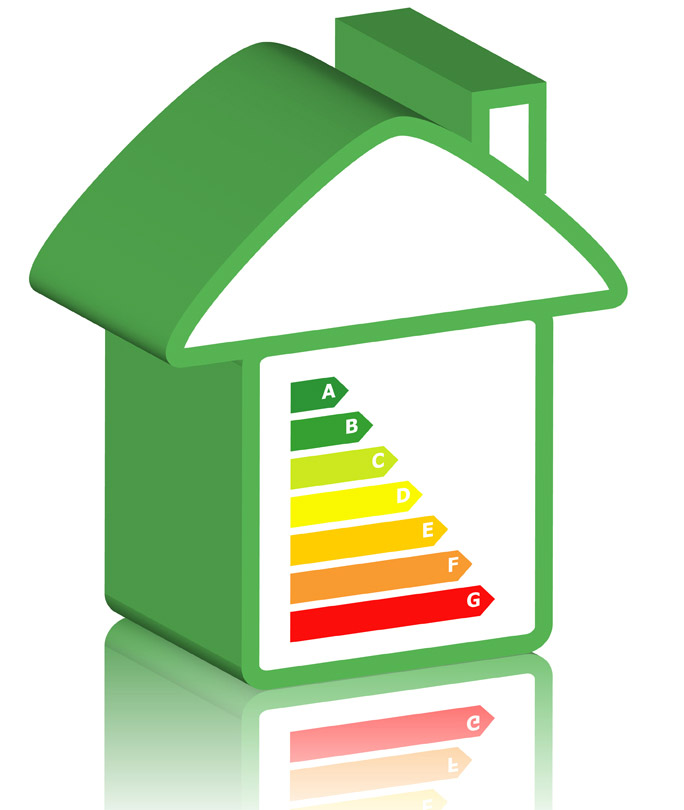
Calculation of electricity consumption
Consumed energy is a very important and essential parameter, which certainly interests every consumer. So we will describe, in more detail below, how to calculate the cost of operating light bulbs. The calculation is quite easy and you only need a few basic data for it.
You need to know the power consumption of a given source (in our case a light bulb), of which unit of measure is Watt, and also the time for which the source is connected to the network = how long the light bulb is lit. Then you multiply the power input by the time (the number of hours for which the light bulb took power from the mains). If the bulb is marked, for example, "12 W", it means that you need to take an hour of 12 W for lighting for one hour, which consumes 12 watt-hours (Wh). For power and consumption data 1 kW (1000 W) and 1 kWh (1000 Wh) units are often used for energy.
The formula for calculating electricity consumption of a 100W light bulb per hour of operation will look like this:
100 (W) x 1 (hour) = 100 Wh = 0,1 kWh
If we now want to calculate how much money will cost us a year-round operation at an electricity price of CZK 4.83 / 1 kWh rounded to CZK 5, we will proceed as follows:
All day operation
0.1 kWh x 24 hours = 2.4 kWh x CZK 5 = CZK 12
Year-round operation
2.4 kWh x CZK 5 = CZK 12 x 30 days = CZK 360 / month x 12 = CZK 4,320 / year.
Now, for comparison, we will do the same calculation for a 15W LED bulb, which is equivalent to a classic 100 W bulb.
15 W x 1 hour = 15 Wh = 0,015 kWh
All day operation
0.015 KWh x 24 hours = 0.36 kWh x 5 = CZK 1.80
Year-round operation
0.36kWh x 5 CZK = 1.8 CZK x 30 days = 54 CZK / month x 12 = 648 CZK / year
Here, too, you can see a huge difference between the prices for the operation of a classic light bulb and an LED light bulb. So, despite the higher purchase price, the investment in an LED bulb, due to its high luminosity with minimal consumption and long life, will really pay off. Below we add an indicative table to compare the costs of annual operation for different technologies.
|
Type of bulb
|
Purchase price
|
Lifespan
|
Power input
|
Price / 1 year
|
|
Classic
|
15 CZK
|
1 000 h.
|
60 W
|
2 674 CZK
|
|
Halogen
|
85 CZK
|
2 000 h.
|
40 W
|
2 117 CZK
|
|
Economical
|
139 CZK
|
8 000 h.
|
15 W
|
913 CZK
|
|
LED
|
250 CZK
|
15 000 h.
|
9 W
|
631 CZK
|
You will find most of the parameters described by us
on the packaging of the bulb, so pay
extra attention while reading it. More about the information on the bulb packaging
here.
In our offer, in addition to the bulbs described above, you can also find
fluorescent tubes,
LED fluorescent lights,
vintage bulbs,
smart light bulbs, but also
special light bulbs, such as krypton bulbs, bulbs designed for use in household appliances or stove bulbs, which are suitable for example in electric ovens, LED lamps, etc...
We hope that the information provided will be beneficial for you and that you will get your bulbs exactly tailored thanks to them. However, in case of any questions or additional information, do not hesitate to contact us
here. We are here for you!
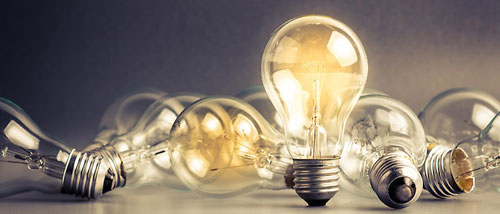
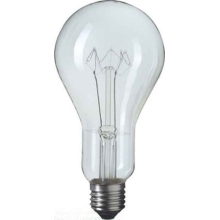
.jpg)
.jpg)
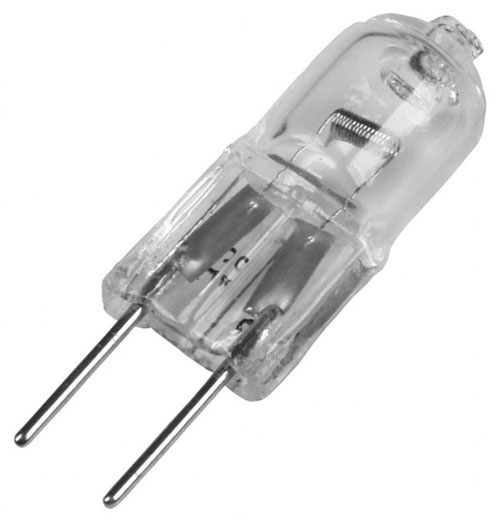
.jpg)


